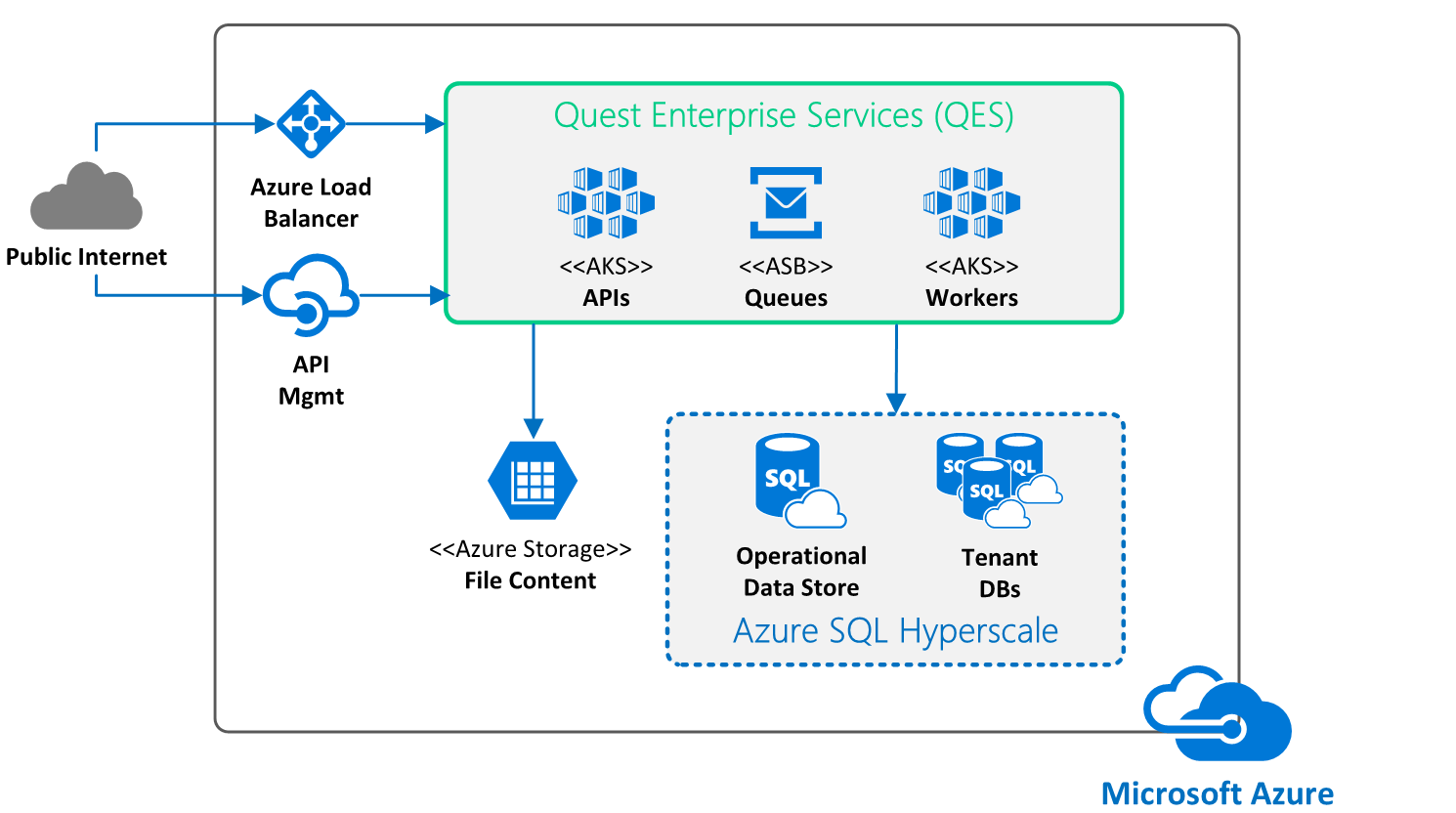Reprinted from Microsoft Customer Stories.
Quest Analytics is a leader in healthcare network solutions, offering a software as a service platform that insurance companies can use to manage provider networks. As the company grew, so did the volume and complexity of its data. Quest Analytics upgraded to the Hyperscale service tier of Microsoft Azure SQL Database to scale rapidly with compute and storage separated. Now, the company has better control of its usage and costs while delivering results to its customers faster, freeing up staff time to focus on developing innovative offerings.
“Separating compute and storage has also allowed us to reinvest some of those savings, and we can actually expand our intellectual property and what products and services we offer in the market.”
– David Pracuta: Vice President of Cloud Operations, Quest AnalyticsANALYTICS FOR HEALTHCARE
For the past 30 years, Quest Analytics has been committed to solving data management problems for provider networks in the healthcare industry. Quest Analytics offers software as a service (SaaS) solutions for payers and providers (insurance companies and doctors) that measure, manage, and monitor provider network adequacy, streamline workflows, analyze network access, and help providers maintain accurate profiles.
When health insurance companies assemble provider networks, they must make sure all the results are correct and consider any regulatory and compliance issues. This helps ensure that potential patients find a healthcare provider with a current profile that aligns with the right location, distance, and type of care.
Quest Analytics processes the network data in batches, but the batch side gradually decreased as the frequency of analytics and output increased. At the same time, the company grew quickly through mergers and acquisitions, and it found itself with a lot of data that was outgrowing its database storage capacity.
“We were unable to process vast amounts of data fast enough for our clients,” says David Pracuta, Vice President of Cloud Operations at Quest Analytics. “Clients have much higher expectations when it comes to turning around complex data processing routines, and SLAs are no longer measured in days but hours. With these high and unpredictable data usage demands on our systems, our databases need to scale rapidly to deliver the near real-time analytical results our clients require.”
WRANGLING DATA AT HYPERSCALE
Quest Analytics wanted more database storage and rapid scaling for its Quest Enterprise Services offering, a self-service SaaS platform. Insurance companies use Quest Enterprise Services to bring intelligence and control to provider network management while eliminating data silos and reducing regulatory risks.
Quest Analytics already had success in using Microsoft Azure SQL Database for Quest Enterprise Services, and the company decided to upgrade to the Hyperscale service tier, with which you can choose the amount of storage and compute capacity that’s required for your workloads. With Hyperscale, Quest Analytics can scale out the storage and compute resources of SQL Database beyond its previous service tier. Additionally, the time that Quest Analytics requires to restore database backups or to scale up or down is no longer tied to the volume of the data in the database.
The company’s change to a new service tier was fast and seamless, with no impact on clients. “The change to Hyperscale was a single click,” says Pracuta. “We couldn’t believe how quickly we staged it. We ran it through performance tests, security reviews, and quality assurance, and within days we implemented it in our production environment.”
FASTER DELIVERY TO CLIENTS
By gaining instant scaling and separating compute and storage, Quest Analytics has sped up its data processing. Clients get a highly reliable service with fewer outages and interruptions, and they don’t have to pay more. “We get hundreds of millions of rows of data every few days, which generates close to a terabyte of data every time we run,” says Pracuta. “With Hyperscale, we can turn around client data within hours, whereas previously, it took days. We no longer have issues related to storage and data compute, which in turn makes our platform more resilient for Quest Analytics clients.”
At the end of data runs, customers can drill down using Quest Analytics’ online cloud tool to generate reports and visualizations of the analytic results. “Next, we’ll be driving toward the ability for users to make ‘what-if’ scenario changes on that analytic run, which they’ll be able to review immediately,” says Neal Danner, Senior Vice President Software Engineering at Quest Analytics. “We’ll reduce the processing timeline to generate near real-time results, accelerating our clients’ decision-making processes, which is a significant value add to them.”
CONTROLLING COSTS AND FOCUSING ON INNOVATION
Quest Analytics has much more flexibility with its databases now that it separated the storage and compute functions, which can be scaled independently. “Sometimes, we need a lot of compute capacity, but we’re not really changing our storage,” says Danner. “We also gained additional capabilities to scale the platform—we can scale up, out, and on-demand faster and more efficiently, which equates directly to time and cost savings.”
Beyond these savings, Quest Analytics set itself up for other successes with Hyperscale. Many of its clients want long-term data retention, and Quest Analytics can now always account for storage and database management in the future. “Separating compute and storage has also allowed us to reinvest some of those savings, and we can actually expand our intellectual property and what products and services we offer in the market,” says Pracuta. “Overall, Hyperscale provides a great user experience and helps us offer a better product, and we couldn’t be happier with that.”
The IT team now has more time to focus on other more value-added tasks to help the company innovate and grow. “We have the skills to develop these database capabilities, but we also have limited staff,” says Danner. “We chose to work with a technology vendor that we trust and to use Azure as the foundation to build our solutions and our products, which is an accelerator for us.”










